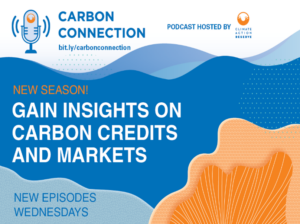
Carbon markets have been established, valuing sequestration and resulting in agreement forms. This section presents the general requirements and trends in establishing voluntary market opportunities. Two types of carbon markets that are driving demand today, compliance markets based on governmentally imposed limits on greenhouse gas emissions (e.g., California’s Cap and Trade Program) and voluntary markets (e.g., corporate sustainability reporting).
Read more about the marketing process HERE.
These sites provide background information on carbon marketing:
The following sites provide carbon marketing sources particular to specific ecosystem sectors. The listings do not confer any recommendations or priorities but are primarily informational.
 The Climate Action Reserve includes articles and registries such as the:
The Climate Action Reserve includes articles and registries such as the:
While a number of carbon marketers may seek carbon from any of the ecosystem components (agriculture, grazing, forestry, blue carbon), some are distinctive to certain market sectors. Here are some of the agriculture and grazing opportunities.

Nori is an accessible entry into carbon markets for regenerative agriculture suppliers. They work directly with all sizes of ag businesses and farmers who have adopted regenerative agriculture practices within the last 10 years in the United States. Nori also distributes a farmers’ newsletter.
Indio Ag provides income to farmers providing carbon on agricultural lands and covers the cost of third-party verification and soil sampling. Contracts are for 5 years. There are a number of videos and webinars at this site discussing marketing, including “What I Wish I had Known: Lessons from Experienced Carbon Farmers.”
ESMC provides the Noble Research Institute LLC study developed through years of research resulting in an economic assessment for ecosystem service market credits from agricultural working lands. The ESMC consortium is housed under the Soil Health Institute. The study addresses carbon credit potential values, water quality credit values, and discusses both demand and supply. A section of the study addresses different crop results, using Comet-Planner.
A presentation on reporting, measurement and verification is HERE and at the ESMC website. A representative of ESMC testified before Congress on Voluntary Carbon Markets In agriculture and forestry.
Tru Terra is a division of Land O’Lakes co-ops and dairy product manufacturers. They have undertaken a carbon sequestration program direct with farmers. In their climate-smart submittal to USDA in 2022 they indicated future programming in Oregon.
NCX A total of 4,000 landowners have signed up for their nearly five million forested acres with NCX. With NCX there are no land acre minimums, and they use annual (year-to-year) agreements, no long-term contracts, and no fees. Every acre of enrolled forest is measured using remote sensing and other practices every year.
ANEW For 20 years anew has been working with private forest landowners. Their program requires 40-year contracts with independent certification (FSC, SFI, AFTS), annual reporting and verification every 5 years and field measurements every 10 years.
Finite Carbon is a developer and supplier of carbon offsets, relevant for forestland owners.
The U.S. Forest Protocol provides requirements and guidance for quantifying the net climate benefits of activities that sequester carbon on forestland. The protocol provides project eligibility rules; methods to calculate a project’s net effects on (GHG) emissions, and approaches for long term project monitoring and reporting.
Developed by the American Forest Foundation and The Nature Conservancy, the Family Forest Carbon Program enables family forest owners to access climate finance from carbon markets—empowering them to help address climate change while earning income from their land.
The USDA program awarded grants to a number of entities nationwide for carbon and farm-related project work. Some of these awardees are seeking partners and participants. See the list of awardees, locations, and topics (several in Oregon).
An article by The Nature Conservancy describes blue carbon sources. EPA states “2,110,125,875 barrels of oil burned can be offset by restoring coastal wetlands.”
Most marketers require third party, independent verification. Here are several registries in the voluntary offset market, which have been developed by governments, non-profits, and the private sector. The following voluntary registries are currently operating, among others:
American Carbon Registry (ACR)
Climate Action Reserve (CAR)